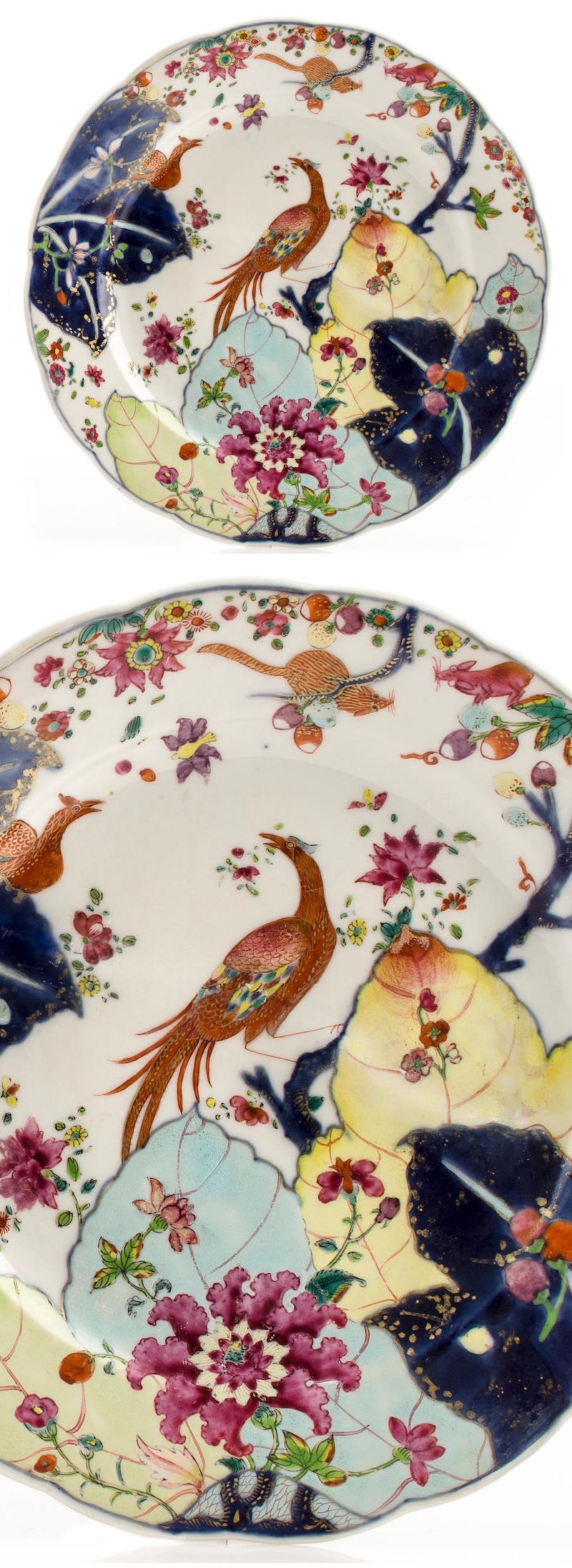
Chinese Export porcelain dish with "Tobacco Leaf" enameled decoration. Second half 18th century. Diameter 9in (22,9 cm)
Chinese export porcelain pattern in Famille rose over-glaze enamels, from the second half of the 18th century. It was made for the European and American markets. Usually in combination with underglaze blue, and often with the addition of gold.
"Tobacco Leaf" and its many variations constitute a family of motifs that were created in China and, starting in 1765, were used for a century to decorate porcelains destined for export to Europe (mainly Portugal and probably England) and Brazil. The total number of Tobacco Leaf and Pseudo motifs in existence is unknown.
The design is signified by large leaves of what might be the flowering Nicotiana (Tobacco) plant, upon which a small phoenix perches bearing a flowering twig in its beak. The defining motifs are surrounded by many multicolored tropical foliage with hibiscus and passion flowers of which some appear to be based on fantasy.
Some flowers beside the large leaves, are often similar to those called "German flowers" as in inspired by Meissen.
The Mottahedeh porcelain factories tells that their exact reproduction requires twenty-eight colors including 22K gold and five firings to manufacture.
In 2003 Pierre L. Debomy published and extensive study called Tobacco Leaf and Pseudo/Feuille de Tabac et Pseudo. A Tentative Inventory/Tentative d’inventaire. This study, the only one on this subject currently in existence, looks at 38 of these motifs (10 Tobacco Leaf and Pseudo) as well as 21 variations on them (12 Tobacco Leaf and 9 Pseudo). After describing the various elements that make up the different families of motifs, the motifs themselves are then studied one by one with the aid of the 400 color photographs that illustrate the the work. To make the identification easier, the author uses a system of letters and numbers to denote the different patterns.
This book, bilingual in English and French, is published by the Société des Amis du musée national de Céramique. The preface is by David Howard and the introduction by Eric Moinet, Director of the Sèvres Ceramics Museum, Cité de la céramique Sèvres & Limoges.
A